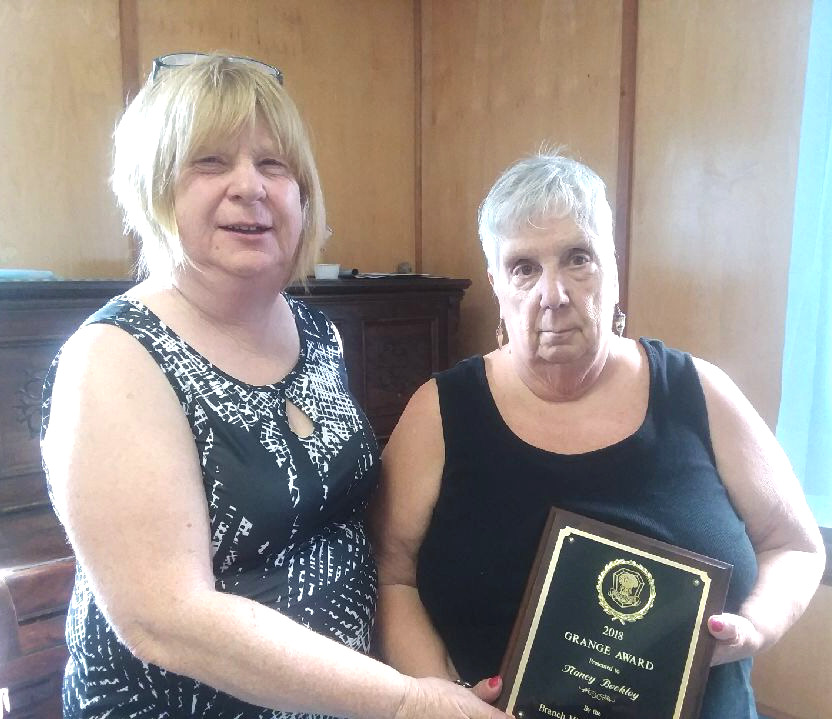Starting this fall, the China transfer station will be open five days a week, from Tuesday through Saturday, instead of the current four days.
At their Aug. 6 meeting, selectmen approved a new schedule under which the facility will be open from 7 a.m. to 3 p.m. Tuesdays, Wednesdays and Fridays; from 7 a.m. to 5 p.m. Thursdays, “the long day”; and from 6:30 a.m. to 3 p.m. Saturdays. Station Manager Tim Grotton said the half-hour earlier Saturday opening is because on Saturdays people are often waiting at the gate well before the current 7 a.m. opening. Selectmen agreed to begin the new hours Tuesday, Sept. 4, unless something unexpected requires a delay.
Board Chairman Robert MacFarland said the station should never be closed three days in a row, for example over Thanksgiving or when Christmas or Independence Day falls on a Tuesday or Saturday. Grotton objected, saying other town employees get either three days off when appropriate or compensation.
Selectmen charged the Transfer Station Committee, whose members endorsed the new hours, with working out a holiday schedule that would avoid three-day closings.
Two controversial issues were discussed at the Aug. 6 meeting, one new and one on-going since late in 2017.
Residents John and Mary Benziger used the public comment period included on selectmen’s agendas to ask about new Town Manager Dennis Heath, in light of a weekend Central Maine newspapers article about his personal views on same-sex marriage, Islam, the role of women and other hot-button topics.
John Benziger was concerned that outsiders would see opinions that Heath expressed or endorsed on social media in the past as representative of the town. He asked MacFarland if the selectmen would have hired Heath if they had read the posts that staff writer Emily Higginbotham quoted. “Yes,” MacFarland replied. “A man’s personal beliefs are his own.”
Selectman Neil Farrington heatedly defended Heath’s right to have and express personal views. Audience member Jean Conway agreed, and said the new manager seems to have the town’s interests at heart.
Heath said Higginbotham had not reported everything he said in their conversation. He said he would never treat people differently because their beliefs and his differ. Asked by Benziger if he had ever encouraged town clerks in Oklahoma, where he previously worked, to deny marriage licenses to same-sex couples, he said he had not, adding, “The law [allowing same-sex marriage] is the law.”
The Neck Road fire pond was re-discussed at length. It was built in November 2017 after voters approved funds for it and, selectmen agree in hindsight, built wrong, too close to the road and with too steep sides. Selectmen had agreed that Heath would obtain an easement from landowner Tom Michaud and a release from abutter Leo Pando and would then seek bids to rebuild the pond farther from the road and with safer sides (see The Town Line, June 25, p. 6).
Heath reported he had oral approval from Michaud, but Pando refused to sign without additional stipulations that were unacceptable.
After considerable discussion of possible results of various courses and of comparative costs, board members voted 3-1 to have Heath proceed as planned without Pando’s signature. Neil Farrington voted against the motion, preferring to fill in the pond; Jeffrey LaVerdiere was absent.
On another ongoing issue, the causeway project at the head of China Lake’s east basin, Heath said a representative of the state’s boat landing division told him parking on the east side of Routes 202 and 9 would not be acceptable, for safety reasons. The Tax Increment Finance Committee that is spearheading the project to provide a new causeway bridge, an expanded boat landing and more lake access had already learned that the state would not invest in the boat landing without more parking.
The committee has been investigating buying property on the east side of the highway.
The goal, Heath said, is 10 to 15 parking spaces, each 12 feet wide by 50 feet long. In other business, Heath reported he already has two requests for local ballot questions for Nov. 6. One, presented by MacFarland, would ask voters to approve a consolidated public safety building to serve fire, rescue and police services. The other, requested by town office staff, would repeal China’s quorum ordinance, which requires about 120 voters be present for a town meeting to be held.
Office staff spend many hours before the March town business meeting twisting arms to get people to come, Heath said. Selectman Irene Belanger reminded everyone that the quorum ordinance was adopted because without it, a handful of people could and often did make decisions for the whole town.
Audience member Wayne Chadwick asked if it would be possible to make the March business meeting a written-ballot affair, so that people could vote as their schedules permitted and go home, instead of spending a Saturday morning doing town business.
The deadline to submit proposed ballot questions is Friday, Sept. 7, Heath said. Sept. 7 is also the deadline for submitting signed nomination papers for local office. To be elected this year are three selectmen; planning board members from districts 2 and 4 plus the at-large member; and budget committee members from districts 2 and 4 plus the secretary and the at-large member. Nomination papers are now available at the town office.
Conway, as chairman of the Comprehensive Planning Committee, asked for and received approval to contract with Kennebec Valley Council of Governments (KVCOG) for a maximum of $20,500 for assistance in revising China’s comprehensive plan. Selectman Irene Belanger, a KVCOG board member, abstained on the vote.
Conway and Planning Board Chairman Tom Miragliuolo said an early step in the planning process will be a visioning session, at which all interested residents will be invited to talk about China’s present and future. They hope to schedule the session in September or October.
Farrington and Heath reported progress toward reaching an agreement with Hussey Communications, in Winslow, to provide wireless service in China, starting with lakeshore residents who currently have no service (unless they spend thousands of dollars to run cable down fire roads) and expanding to other unserved and underserved areas.
Heath had asked five town departments – the town clerk, the transfer station, public works, fire and rescue and the police – to bring or send selectmen reports on current activities. He plans to include department reports on each future selectmen’s agenda, he said.
He also gave selectmen a summary financial report for July, promising one each month.
At future meetings, Heath would like board members to talk about a revised permit fee schedule he and Codes Officer Paul Mitnik are considering; China’s Land Use Ordinance; accepting a request to help manage the Heritage Tour Scholarship Fund on behalf of China Middle School; changing internal financial controls, like requiring two signatures on every check the town issues; and the town manager’s bond, which Heath believes should be higher than it is now even though a higher bond is more expensive.
The next China selectmen’s meeting is scheduled for 6:30 p.m. Monday, Aug. 20, according to the town’s website.













 The following students have been named to the dean’s list at the University of New Hampshire, in Durham, New Hampshire, for the spring 2018 semester.
The following students have been named to the dean’s list at the University of New Hampshire, in Durham, New Hampshire, for the spring 2018 semester.